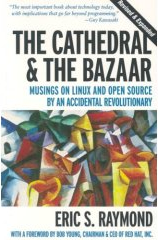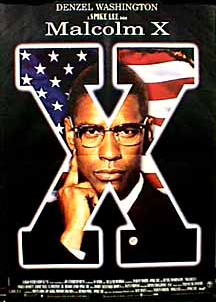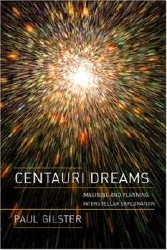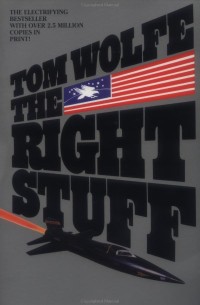07.05.07
Posted in books, programming, reviews, wikipedia at 10:08 pm by danvk
 There’s a long tradition of great titles in the software engineering world. Djikstra’s “Goto Considered Harmful” has spawned thousands of imitators, and even a meta-paper. Fred Brook’s The Mythical Man-Month clicks as soon as you understand the title. Eric S. Raymond’s “The Cathedral and the Bazaar” gives open source software its defining image.
There’s a long tradition of great titles in the software engineering world. Djikstra’s “Goto Considered Harmful” has spawned thousands of imitators, and even a meta-paper. Fred Brook’s The Mythical Man-Month clicks as soon as you understand the title. Eric S. Raymond’s “The Cathedral and the Bazaar” gives open source software its defining image.
I read “The Cathedral and the Bazaar” as an introduction to the world of open source software for someone interested in joining it. There’s a history lesson to explain where you’ve come from and what you’ve accomplished. There’s arguments and a case study to show that you’re on the right ship. And finally, the essay serves as a call to arms, to get you excited about becoming a contributor.
I found the history lesson most interesting. I’d had some understanding of this before, but lacked much detail. ESR gives a first-person account of UNIX and software development from the late 1970′s to the present. This is the canonical story of open source. It has its heroes and villains, its true believers and false idols. There’s the Moses figure, Richard Stallman, who freed the users of UNIX from the oppressive yoke of restrictive licenses. But like Moses, he couldn’t enter the promise land. Open source stagnated, awaiting its Last True Prophet. This was Linus Torvalds, who created the Linux kernel, the last piece of the open source operating system.
ESR really uses that of tone. I get the sense that he’s intimidated by Richard Stallman and absolutely idolizes Linus Torvalds. The essay drips with hero worship. Linus is the visionary whose vision he’s writing about.
Beyond the hero worship, there is a clear exposition of the open source model. In order to avoid the problem of N^2 channels of communication amongst N contributors, open-source project have a small set of core developers. These core developers have total control over the project. They decide what gets checked in, and where the project goes. It’s a (hopefully) benevolent oligarchy. Outside of that core, there are occasional contributors and legions of testers, who can submit bug reports. Does this strict hierarchy really sound like a Bazaar?
If you want a real Bazaar, think about Wikipedia. Since I’ve never contributed to an open source project, I kept it in mind as a reference point. It works pretty well, but this perspective has the side effect of making open source development look positively Cathedral-like. Think about it. Rather than having a core set of contributors and legions of users/testers, Wikipedia explicitly aims to make all of its users into contributors. It does this by lowering the barriers to entry as low as it conceivably can, even if this leads to vandalism. All that’s needed to contribute is the ability to write in some language. Last time I checked, English had a few more speakers than C++. Rather than just reporting problems, users are empowered to fix them on the spot. See a typo? Just correct it. Want a citation? Find one and plop it in to help future readers.
I enjoyed “The Cathedral and the Bazaar” for the history lesson, but I find its central image misleading. The development process of open-source projects is as well-organized as any commercial venture.
Permalink
04.14.07
Posted in books, music, personal at 12:25 am by danvk
Albums:
- A Tribe Called Quest, The Low End Theory (1991)
- R.E.M., Murmur (1983)
- The Velvet Underground, Loaded (1970)
- Bob Dylan, The Freewheelin’ Bob Dylan (1962)
Some albums are just inextricably associated with times and places in my life. Loaded wins that award for summer 2006. It’s hard to say how long you have to wait to know, but the early returns have Reasonable Doubt as the sound of starting at Google.
Books:
- Kenneth Browser, The Starship & the Canoe (1978)
- Eric S. Raymond, The Cathedral and the Bazaar (1997)
Hopefully I’ll write more about both these books in the next week or so.
Permalink
02.23.07
Posted in books, music, personal at 12:11 am by danvk

The Freshest Kids: A History of the B-Boy
Fun history of hip-hop and breakdancing in particular.

Modern C++ Design, by Andrei Alexandrescu
If ever you thought you understood C++…

Hard-boiled Wonderland and the End of the World, by Haruki Murakami
A much easier, faster read than The Wind-Up Bird Chronicle, but I prefer my darkness alone in the bottom of a well rather than in a subterranean cavern with a plump 18 year-old who may or may not be a sex interest.

King: Man of Peace in a Time of War
A look at Martin Luther King’s principle of nonviolence in the context of the Vietnam War. The extended clip of King on the Michael Douglas show was fascinating. In the future, we’ll be seeing more and more legendary figures in down-to-earth contexts like this.

Malcolm X, Directed by Spike Lee
Malcolm X’s life forms a fascinating counterpoint to Dr. King’s, and this is one hell of a movie.
Permalink
11.27.06
Posted in books, reviews at 10:49 pm by danvk

Recently, I’ve been trying to write at least a short review of every book I read. The latest on my list: Centauri Dreams, by Paul Gilster.
Centauri Dreams. What a name. I noticed it on a blogroll this summer and was instantly drawn in to Paul Gilster’s blog. It embodies everything that’s wonderful about blogs and the web. Interstellar travel is a niche topic. Almost nobody works on it for a living. I’d be lucky to find any books in a library on the topic, and if I did, odds are they’d be from the Apollo era, if not earlier. But with Centauri Dreams, I get a relevant, up to the minute story every day.
After a few weeks of reading the blog, I realized that there was a book to go along with it (yes, this seems backwards) and Centauri Dreams the book quickly shot to the top of my reading list. It even inspired me to get a library card in Mountain View!
The book is a summary of all the major ideas that have been advanced for interstellar travel in the last fifty years. The problem is a difficult one. Even the New Horizons spacecraft, the fastest ever launched, would take 80,000 years to get to the nearest star. It would make more sense to wait and develop new technologies, and there’s a detailed discussion of the Wait equation. Much of the book is devoted to exotic propulsion methods and the men who dreamt them up. The author clearly admires these visionaries, and has read all their books. Even the bad science fiction that they wrote on the side.
There’s Freeman Dyson and the legendary Orion project, which recommended denoating nuclear bombs underneath a spacecraft and riding the shockwaves in the 1950s. The success of the Mercury program and the Nuclear Test Ban Treaty put an end to that. Then there’s Robert Forward and his solar sail (check). A solar sail would be tens of kilometers across and incredibly thin. It would be propelled by photons from the sun, and thus wouldn’t need to carry fuel. This would make it incredibly light.
Viewing the development of space flight through the prism of these programs was eye-opening. Much like Tom Wolfe’s The Right Stuff, it shows that the rosy picture of rapid, brilliant technological advance and heroic astronauts isn’t the whole story. From the standpoint of interstellar travel, the 1950s were a golden age. The space age was coming quickly and there was infinite potential. Doors were wide open: exotic ideas like Project Orion were given funding and a chance to prove themselves. But then we had to go to the Moon by 1970, and suddenly there was no room for anything but man-carrying rockets. Projects like the Solar Sail would foreverafter be second-class citizens.
Freeman Dyson’s take on all this is fascinating, and inspired me to start reading his Disturbing the Universe, which I’ll hopefully review soon. Here’s an excerpt:
The history of the exploration of space since 1958 has been the history of the professionals with their chemical rockets. The professionals have never been willing to give a fair chance to radically new ideas. Orion is dead and I bear them no grudge for that. Orion was given a fair chance and failed. But there have been several other radical schemes that came later, schemes better than Orion, schemes that could do everything Orion could do and more, schemes that do not spread radioactive debris around the solar system. None of these newer schemes has been given the chance that was given to Orion, to prove itself in fair competition with chemical rockets. Never since 1959 have the inventors of new kinds of spaceship been encouraged to try out their ideas with flying models as we did at Point Loma. You will not find any of their models resting beside our Hot Rod in the National Air and Space Museum. (115)
There are problems other than propulsion, of course. Gilster also talks about communications, nanotech and AI. The AI discussion was awful and used old results to try and create a sense of hope where there is none. The nanotech discussion was far more interesting. Lowering a ship’s weight has fantastic effects on travel time, so miniaturization could go a long way. I pictured an interstellar mission as a swarm of microscopic ships, each specialized and capable of communicating with the others. If they were small enough, they could just be individually accelerated towards the stars. I don’t know what the masses and speeds would have to be for this to be reasonable, though.
An interstellar mission won’t have any hope of getting funding until telescopes start taking pictures of blue-green worlds around sun-like stars. And there’s a lot of work on that front. I’m excited about the ESA’s COROT mission that’s being launched in late December and NASA’s Kepler mission in 2008. The Centauri Dreams blog is a great way to stay up-to-date on such news. The book is not. I whole-heartedly recommend the former, and maybe 2/3-heartedly recommend the latter.
Permalink
11.03.06
Posted in books, reviews at 10:00 pm by danvk
 I found this review of Tom Wolfe’s The Right Stuff from the start of this summer. It’s interesting for me to read this, because my attitudes toward manned space travel have evidently changed dramatically in the past six months. More on that in the review of my next book.
I found this review of Tom Wolfe’s The Right Stuff from the start of this summer. It’s interesting for me to read this, because my attitudes toward manned space travel have evidently changed dramatically in the past six months. More on that in the review of my next book.
I finished reading Tom Wolfe’s The Right Stuff this afternoon, and I was completely blown away. I may very well be a sucker for anything space-related (I did read every book on it at the local library), but this book was different. It made me feel as though every other book I’d read on the space program was an historical artifact, something that reflected the opinions and attitudes of its time towards the space program. But Tom Wolfe was cutting right to the quick. He was exposing the rest of the press for what they were.. the “Victorian gent,” as he likes to call them, throwing the astronauts softballs in order to portray them as national heroes.
The really shocking things that came out of this book is just how easily the whole space program could have been different, and just how much power the media had over it all. It wasn’t clear at all in 1959/1960 whether the Mercury program was the place to be. The test pilots weren’t sure if the space program was just a path to glory, or a complete dead end. The X-15 program looked much more promising at first. But what really shifted things was the first three successful Mercury flights.. Shepherd, Grissom, Glenn. When the press turned the astronauts into national heros, there was no backing down from this route to space exploration. And the X-20 program, which would have sent piloted craft into orbit, was scratched. Scratched to the point that I’d never even HEARD of it.
The bits of the book where he talked about the chimps were absolutely fantastic. A very Tom Wolfe tone.
I wished that the book had continued past the Mercury program. It would have been completely appropriate for it to go until the end of the Apollo program, when the infamous budget cuts came around. I would have loved to hear Tom Wolfe’s take on that part of the whole space story. A little followup on what happened to the characters, too. I checked them all out on Wikipedia… most satisfying: Deke Slayton finally got to fly in space in 1975, Pete Conrad walked on the moon (Apollo 12), and so did Alan Shepherd (Apollo 14).
I’ve had about as much Tom Wolfe as I can take for at least the next month, but I’d love to read something else by him in the future.
Permalink
« Previous Page — « Previous entries
Next entries » — Next Page »
 There’s a long tradition of great titles in the software engineering world. Djikstra’s “Goto Considered Harmful” has spawned thousands of imitators, and even a meta-paper. Fred Brook’s The Mythical Man-Month clicks as soon as you understand the title. Eric S. Raymond’s “The Cathedral and the Bazaar” gives open source software its defining image.
There’s a long tradition of great titles in the software engineering world. Djikstra’s “Goto Considered Harmful” has spawned thousands of imitators, and even a meta-paper. Fred Brook’s The Mythical Man-Month clicks as soon as you understand the title. Eric S. Raymond’s “The Cathedral and the Bazaar” gives open source software its defining image.





 I found this review of Tom Wolfe’s
I found this review of Tom Wolfe’s